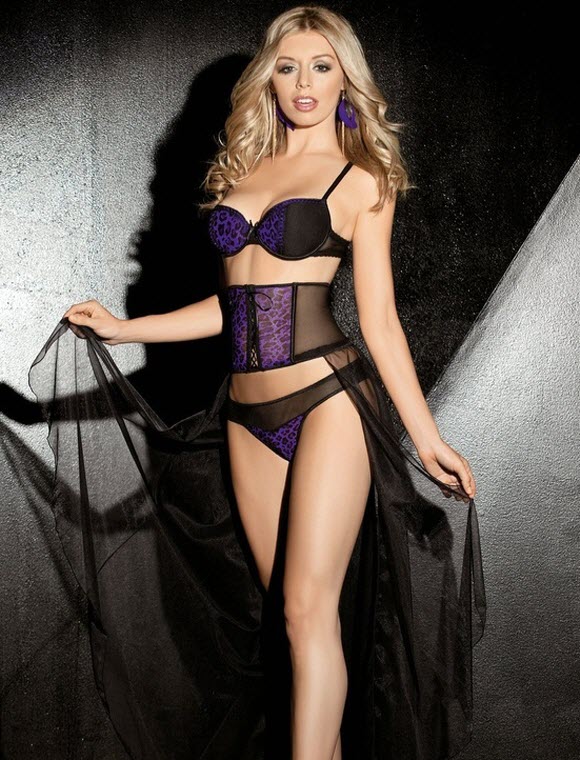A waist cincher is a close relative of the corset. As many familiar readers will know, a corset is a foundation garment worn to mold and shape the torso into a desired shape through the use of rigid panels, boning and tight lacing. Typically they are worn to slim the body and make it conform to a fashionable hourglass silhouette. The cincher is simply a modified, shorter type of corset which extends from the top of the hips to the bottom of the rib cage. As the name suggests, this little garment only covers the wearer’s waist.
Many cincher styles abound and may be constructed of fabrics such as cotton, satin, rayon, leather or even PVC. Cinchers are typically simple garments which can be adorned with fancy lace, contrasting fabrics, zippers, lacing or decorative piping. The cincher gets its name from the design and construction. Typically, the front of a cincher will feature a vertical seam which is joined together using a zipper or hook and eye closure. The cincher is then tightened around the wearer’s torso by tightening lacing at the back. The cincher is “cinched” together thereby constricting the wearer’s waist, creating an appealing hourglass silhouette.
Often, cinchers may incorporate another functional embellishment; garters. As you may know, garters are those little clips that are sewn into corsets, girdles, garter belts and other foundation garments to hold up a pair of stockings. In England and other parts of the U.K they are known as suspenders. Cinchers provide an excellent foundation for garters. When combined with stockings, the style creates a very flattering site with the line of the wearer’s leg extending up all the way to the waist. This creates the illusion of longer, sexier legs.
A waist cincher is such a simple foundation garment, introduced over a century ago to help ladies maintain an elegant hourglass shape. It’s no secret that women have the misfortune of carrying extra weight in the hips and tummy. So it should not be surprising that the simple cincher was so popular during the buttoned-up Victorian era to help women secretly maintain an idealized, if unnatural appearance. The waist cincher as well as the larger corsets were quickly phased out around 1910-1920 as societies changed and technology changed the way women dressed. Newer foundation garments which allowed a more natural look and movement, replaced the waist cincher of the past.
Today, the cincher is simply used as costume and bedroom lingerie. The style is instantly classic and always helps to create a more flattering, curvy silhouette.

